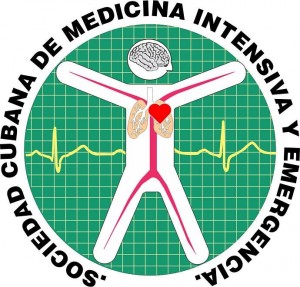Síndrome de Wolff Parkinson White: reporte de un caso / Wolff Parkinson White Syndrome: a case report
Palabras clave:
Síndrome de Wolff Parkinson White, Malformaciones congénitas, Alteraciones electrocardiográficas, Anomalía de EbsteinResumen
RESUMEN
Fundamento: la prevalencia del síndrome de Wolff Parkinson White (WPW) oscila entre el 0,1% y el 3% siendo el más frecuente de los síndromes de pre excitación, y causa común de frecuencia cardíaca rápida. Es un síndrome de pre excitación de los ventrículos del corazón, una anormalidad cardiaca congénita que consiste en la presencia de un haz anómalo, el Haz de Kent, que transcurre por la parte anterolateral de la aurícula y ventrículo derecho (en caso de ser por la parte izquierda se conoce como Haz de Ohnell).
Objetivo: presentar el caso clínico de una paciente con el diagnóstico de síndrome de Wolff Parkinson White con el antecedente de una anomalía de Ebstein.
Caso Clínico: se presenta paciente blanca, femenina de 47 años de edad, diagnosticada en la infancia con una anomalía de Ebstein y doble sistema pielocalicial. Antecedentes de una hija de 28 años la cual presenta síndrome de WPW con diagnóstico a los 15 años de edad. Hace aproximadamente 2 años la paciente comienza con episodios de taquicardia, mareos, dificultad para respirar por momentos, sensación de desmayo. Se le realiza un examen físico que junto al cuadro clínico y el ECG, confirman el diagnóstico de un síndrome de Wolff Parkinson White.
Conclusiones: las manifestaciones clínicas acompañado de los datos clásicos electrocardiográficos: intervalo PR menor 120 mseg, QRS ancho con onda delta y cambios secundarios de repolarización confirmaron el diagnóstico de síndrome WPW.
Descargas
Citas
1- Almendral J, Castellanos E, Ortiz M. Taquicardias paroxísticas supraventiculares y síndromes de preexcitación. Rev Esp Cardiol. 2012;65(5):456-69.
2- Cohen M, Triedman J, Cannon B, Davis A, Drago F, Janousek J, et al. PACES/HRS Expert Consensus Statement on the Management of the Asymptomatic Young Patient with a Wolff-Parkinson-White (WPW, Ventricular Preexcitation) Electrocardiographic Pattern. Heart Rhythm. 2012;9:1006-24.
3- Gollob MH, Green MS, Tang A, Gollob T, Karibe A, Hasan AS y col. Identification of a gene responsible for familial Wolff –Parkinson-White syndrome. N Engl J Med 2001;344(24): 1823-1831.
4- Munger TM, Packer DL, Hammill SC, Feldman BJ, Bailey KR, Ballard DJ, et al. A population study of the natural history of Wolff-Parkinson-White Syndrome in Olmsted County, Minessota, 1953-1989. Circulation 1993; 87: 866-73
5- Viñolas Prat X, Rodriguez Font E, Alegret Colome JM, Bayés de Luna A. Arritmias hiperactivas supraventriculares. Medicine (Idepsa) 1996; 7(19): 762-70
6- Castellano Reyes C, Pérez de Juan Romero MA, Espinosa Caliani JS. Síndromes de preexcitación. En: Castellanos Reyes C, Pérez de Juan Romero MA. Electrocardiografía Clínica. Madrid: Ediciones Harcourt, 2000; 81-100.
7- Deal BJ, Keana JF, Gillette PC, Garson A Jr. Wolff-Parkinson-White syndrome and supraventricular tachycardia during infancy: Management and follow-up. J Am Coll Cardiol 1985; 5(1):130-5
8- Chen SA, Chiang CE, Tai CT, Lee SH, Chiou CW, Ueng KC, et al. Longitudinal clinical and electrophysilogical assessment of patients with symptomatic Wolff-Parkinson-White Syndrome and atrioventricular node reentrant tachycardia. Circulation 1996; 93: 2023-32.
9- L. Wolff, J. Parkinson, P. D. White. Bundle-branch block with short P-R interval in healthy young people prone to paroxysmal tachyardia. American Heart Journal, St. Louis, 1930, 5: 685.
10- Monqaut C, Serra C. Los trastornos de la conducción intraventricular, bloqueos de rama y síndromes de preexcitación. En: Serra C , Fuenzalida F. El electrocardiograma en la práctica médica. 2nd ed. Buenos Aires:editorial Atlante Argentina SRL,1991: 38-50.
11- Almendral J, Castellanos E, Ortiz M. Update: Arrhytmias (V). Paroxysmal supraventricular tachycardias and preexcitation syndromes. Rev Esp Cardiol. 2012;65:456---69.
12- Bayes de Luna A. Electrocardiografía clínica. 7.a ed. Barcelona: Permanyer; 2012; p. 209---20.
13- Rosner MH, Brady WJ Jr, Kefer MP, Martin ML. (1999). «Electrocardiography in the patient with the Wolff-Parkinson-White syndrome: diagnostic and initial therapeutic issues».American Journal of Emergency Medicine 17 (7): pp.705-14.
14- Olgin JE, Zipes DP. Specific arrhythmias: diagnosis and treatment. In: Bonow RO, Mann DL, Zipes DP, Libby P, eds. BRAUNWALD'S HEART DISEASE: A TEXTBOOK OF CARDIOVASCULAR MEDICINE. 9th ed. St. Louis, Mo: WB Saunders; 2011: chap 39.
15- Zimetbaum P. Cardiac arrhythmias with supraventricular origin. In: Goldman L, Schafer AI, eds. CECIL MEDICINE. 24th ed. Philadelphia, Pa: Saunders Elsevier; 2011 chap 64.
16- Packer DL, Gallagher JJ, Prystowsky EN. Physiologic substrate for antidromic reciprocating tachycardia: prerequisite characteristics of the accessory pathway and AV conduction system. Circulation 1992; 85(2): 574-88.
17- Bardy GH, Packer DL, German LD, Gallagher JJ. Preexcited reciprocating tachycardia in patients with Wolff-Parkinson-White Syndrome: incidence and mechanisms. Circulation 1984; 70(3): 377-91
18- Atie J, Brugada P, Brugada J, Smeets JL, Cruz FS, Peres A, et al. Clinical and electrophysiologic characteristics of patients with antidromic circus movement tachycardia in the Wolff-Parkinson-White Syndrome. Am J Cardiol 1990; 66(15):1082-91.
19- Wellens HJ, Durrer D. Wolff-Parkinson-White Syndrome and atrial fibrillation. Am J Cardiol 1974; 34(7): 777-82.
20- Lesaka Y, Yamane T, Takahashi A, Goya M, Kojima S, Soejima Y, et al. Retrograde multiple and multifiber accessory pathway conduction in the Wolff-Parkinson- White Syndrome: potential Precipitating factor of atrial fibrillation. J CardiovascElectrophysiol 1998; 9: 141-51.
21- Teo WS, Klein GJ, Guiraudon GM, Yee R, Leitch JW, McLellan D, et al. Multiple accessory pathways in the Wolff-Parkinson-White Syndrome as a risk factor for ventricular fibrillation. Am J Cardiol 1991; 68: 889-91 .
22- Leitch JW, Klein GJ, Yee R, Leather RA, Kim YH. Syncope associated with supraventicular tachycardia rate or vasomotor response? Circulation 1992; 85(3): 1064-71.
23- Kapoor WN. Syncope. N Eng J Med 2000; 343(25): 1856-62
24- Epstein AE, Miles WM, Benditt DG, Camm AJ, Darling EJ, Friedman PL, et al. Personal and public safety issues related to arrythmias that may affect consciousness: implications for regulation and physician recommendations. A medical/ scientific statement from the AHA and the NASPE. Circulation 1996; 94: 1147- 66
25- Klein GJ, Prystowsky EN, Yee R, Sharma AD, Laupacis A.Asymptomatic Wolff-Parkinson-White: should we intervene? Circulation 1989; 80: 1902-5.
26- García Civera R. Electrofisiología de las vías accesorias AV comunes. En: García Civera R, Ruiz Granell R, MorellCabedo S, Sanjuán Máñez R, Martínez Leon J, Botella Solana S, et al. ElectrofisiologíaCardíacaClínica y Ablación. Madrid: McGraw-Hill-Interamericana, 1999; 181-203.
27- Almendral Garrote J, MarínHuerta E, Medina Moreno O, Peinado Peinado R, Pérez Álvarez L, Ruiz Granell R, et al. Guías de práctica clínica de la Sociedad Española de Cardiología en arritmias cardíacas. RevEspCardiol 2001; 54: 307-67
28- Jung Jung H, Young Ju H, Chul Hyun M, Bum Lee S, Hyang Kim Y. Wolff-Parkinson-White syndrome in young people, from childhood to young adulthood: relationships between age and clinical and electrophysiological findings. Korean J Pediatr. 2011;54(12):507-11.
29- Cain N, Irving C, Webber S, Beerman L, Arora G. Natural History of Wolff-Parkinson-White Syndrome Diagnosed in Childhood. Am J Cardiol 2013; 112(7):961-5.
30- Pappone C, Videdomini G, Manguso F, Baldi M, Pappone A, Petretta A, et al. Risk of Malignant Arrhythmias in Initially Symptomatic Patients With Wolff-Parkinson-White Syndrome Results of a Prospective Long-Term Electrophysiological Follow-Up Study. Circulation. 2012;125:661-8.







